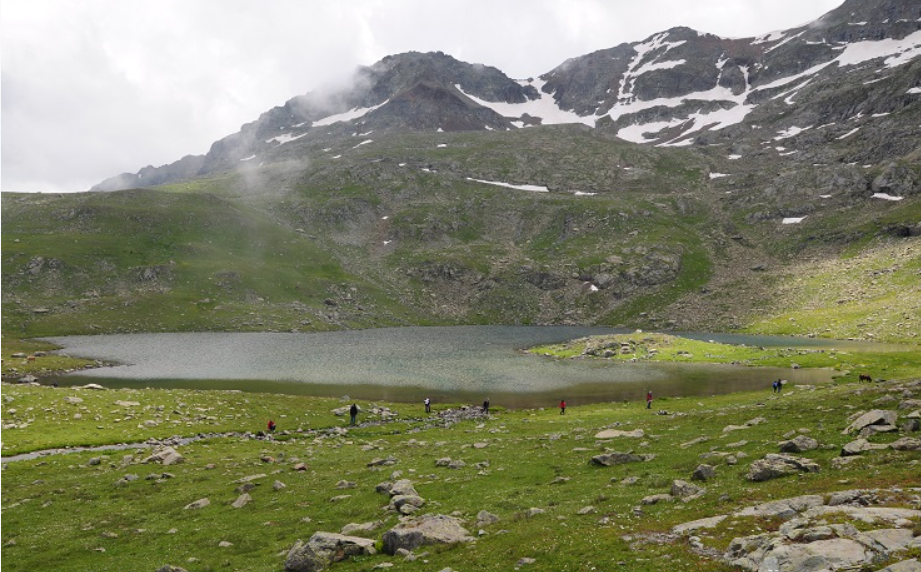Ovit Plateau is a high mountain plateau located in the Black Sea Region of Turkey, within the borders of İkizdere district in Rize province, at an altitude of approximately 2,640 meters. Situated on the southeastern extensions of the Kaçkar Mountains, the plateau forms a natural transition zone between the Black Sea and Eastern Anatolia regions. To the north, it features steep slopes facing the Black Sea, while to the south it opens up into drier and more arid plateau formations. The Ovit Plateau covers a wide topographic area including Mount Ovit and the surrounding peaks.

Ovit Plateau (T.C Kültür ve Turizm Bakanlığı)
Climate and Ecosystem
Due to its high elevation, the plateau has a cool and rainy climate throughout the year. Heavy snowfall is common in winter, and even in summer, temperatures remain relatively low. These climatic conditions have allowed the development of typical alpine meadows, dwarf forests, and a variety of endemic plant species. The area surrounding Ovit Plateau hosts plant life unique to the Black Sea flora as well as transition species from the Eastern Anatolian steppes, making it biogeographically significant. Wildlife such as bears, foxes, jackals, wild goats, and various bird species can also be observed in the region.
Historical Background and Pass Significance
Historically, the Ovit Plateau served as an important pass connecting the Eastern Black Sea region to the Erzurum Plain. For this reason, it has held strategic importance in terms of migration routes, trade paths, and military movement throughout history. During the Ottoman era in particular, the plateau pass was used as part of caravan routes; its closure due to winter conditions had a direct impact on the economic rhythm of local settlements.
Maintaining its function as a passageway, the Ovit Mountain Pass became part of a modern transportation axis with the opening of the Ovit Tunnel in 2018. With a length of 14.3 kilometers, it is one of the longest highway tunnels in both Turkey and Europe, greatly facilitating transportation between the Black Sea and Eastern Anatolia regions.
Cultural Life and Transhumance
The Ovit Plateau is traditionally used by local communities for transhumance activities during the summer months. Historically, the local population has sustained itself through small-scale livestock farming, particularly sheep and goats, as well as the production of dairy products such as butter and cheese. This pastoral lifestyle is also reflected in the region’s unique architectural styles, clothing traditions, culinary habits, and musical heritage.
Tourism and Outdoor Sports Potential
Today, the Ovit Plateau has become a site for nature-based tourism and ecotourism activities. The Ovit Plateau Festival, held in the summer, is a popular event attended by both locals and visitors. The plateau offers hiking trails, camping areas, and scenic spots ideal for nature photography. For those interested in mountaineering and trekking, the surrounding peaks, valleys, and glacial lakes provide appealing destinations.

Ovit Plateau (T.C Kültür ve Turizm Bakanlığı)
Transportation and Infrastructure
The highway stretching from İkizdere in Rize to İspir in Erzurum provides access to the plateau via the Ovit Pass. Previously one of the most challenging segments of the road due to heavy snowfall, the construction of the Ovit Tunnel has largely resolved this issue. The tunnel now ensures year-round accessibility to the plateau.


